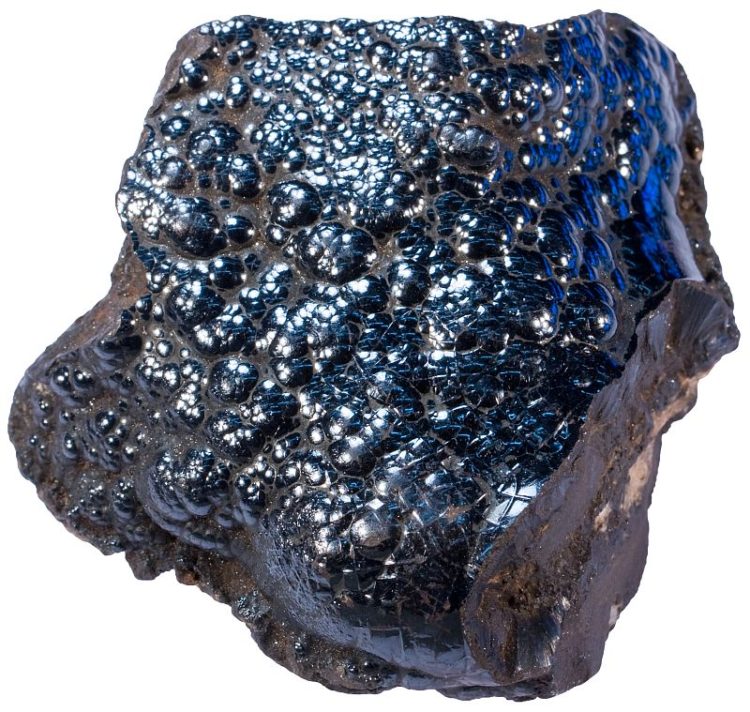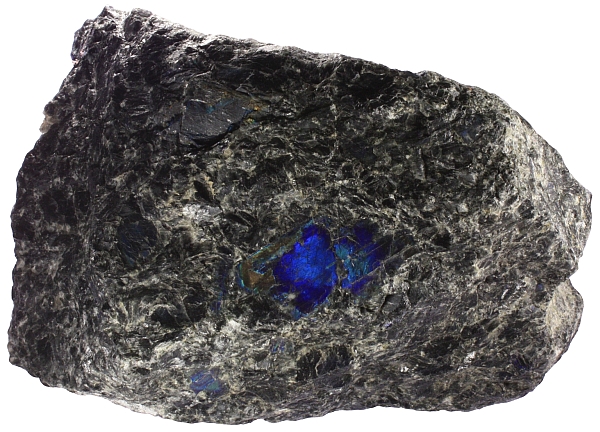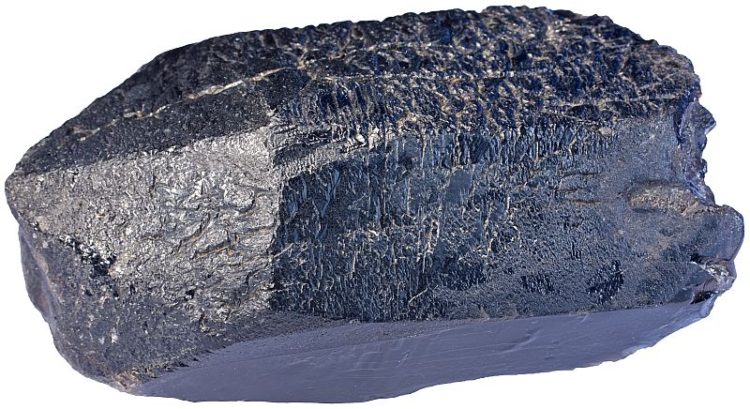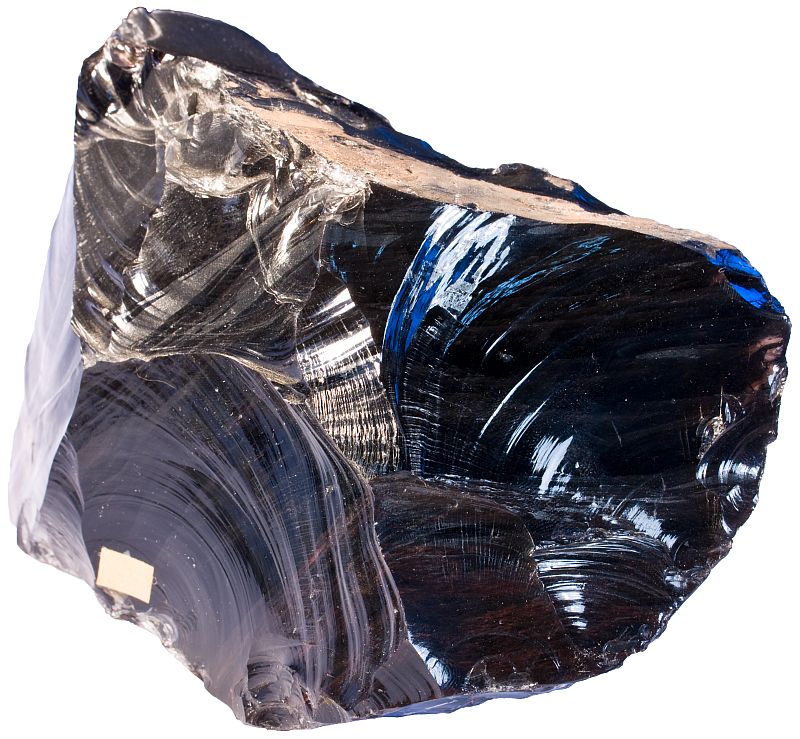Today is a birthday. Not my birthday but my dear home country Estonia is 95 years old now. I wish her a prosperous future. May it be much brighter than the past.
Estonia’s national colors are blue, black and white and this post is inspired by these colors.

The colors that dominate on the picture above are dark brown with white and bluish spots — the approximate colors of the national flag of Estonia. Dark brown is the natural color of hematite, white spots are reflections from the light source but what about the blue spots?
I have to say that I am really not sure. Some minerals possess a very beautiful play of colors called iridescence. Especially well-known example is a plagioclase feldspar mineral labradorite:

Is the same effect responsible for the bluish spots on hematite? No, I don’t think so because hematite is practically opaque mineral which does not allow light to penetrate into it. But is it still caused by some intrinsic property that is specific to hematite?
This is also not likely. I have seen very similar effect in other minerals and rocks and I even remember some comic books which I read when I was much younger. It was about Native Americans that always had pitch black shiny hair with bluish glare. I doubt that they really have hair like that but maybe some tribes with very dark hair in some conditions? Somehow artists had to get the idea.


Smoky quartz is a silicate mineral, obsidian is a volcanic glass, and hematite is an oxide of iron. They are all very different materials. We can therefore almost certainly rule out the possibility that the bluish color has anything to do with the internal structure of these materials.
However, the surfaces of these samples have something in common — they all reflect light well and they are very dark-colored, almost black.
This in probably the key to understand this phenomenon. Blue color may be a weak reflection which looks bluish because it comes from a very dark surface. This is my guess. I have not found any confirmation to this. I would be interested to hear your opinions if you have an alternative explanation.

Happy Birthday Estonia ! Hi Siim can you get labradorescence in a piece of dunite ? I have a lump of basalt xenolith dunite from Lanzarotte and the outer basalt has a blue peacock luminescence on a small part of it . I really enjoy all of your postings and photographs.
Thanks, Pauline! Yes, I think it is possible. Basalt may contain plagioclase crystals. This small part might be labradorite phenocryst.